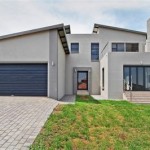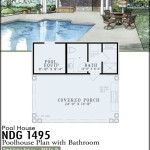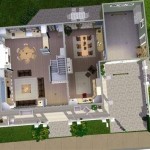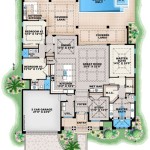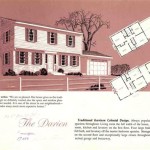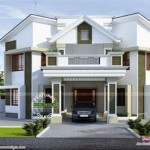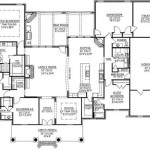Post And Beam House Plans Vermont: Embracing Timber Frame Living
Vermont, with its rich landscape of rolling hills, dense forests, and historic architecture, provides a compelling backdrop for post and beam homes. These structures, characterized by their exposed timber framing, offer a unique blend of rustic charm, structural integrity, and design flexibility. Choosing post and beam house plans in Vermont requires careful consideration of local building codes, environmental factors, and individual lifestyle preferences.
The appeal of post and beam construction lies in its inherent strength and aesthetic beauty. The exposed timber frame serves as both the structural support and a defining design element, creating open, airy spaces with soaring ceilings and expansive views. This architectural style is particularly well-suited to Vermont's landscape, offering residents a connection to the natural environment while providing a durable and energy-efficient living space. The choice of timber species, the joinery techniques employed, and the overall design of the home can significantly impact its aesthetic and functional characteristics.
The process of selecting post and beam house plans in Vermont involves several key stages, from initial conceptualization to final construction. It's crucial to work with experienced architects, timber framers, and builders who are familiar with the specific challenges and opportunities presented by the Vermont climate and building regulations. A well-designed and properly constructed post and beam home can provide generations of enjoyment, while a poorly executed project can lead to costly repairs and ongoing maintenance issues.
Understanding the Core Principles of Post and Beam Construction
Post and beam construction, also known as timber framing, relies on a skeletal framework of heavy timbers joined together using traditional mortise and tenon joinery, secured with wooden pegs. This method distributes the structural load throughout the frame, allowing for large, open spaces without the need for load-bearing interior walls. The exterior walls are typically non-load-bearing and can be filled with a variety of materials, such as structurally insulated panels (SIPs), conventional stud framing, or even straw bale construction. The choice of infill material will influence the home's energy efficiency, sound insulation, and overall aesthetic.
The primary advantage of post and beam construction is its inherent strength and durability. Timber frames are designed to withstand heavy snow loads, strong winds, and even seismic activity. The use of natural materials contributes to a healthy indoor environment, as timber is a breathable material that helps regulate humidity and temperature. Furthermore, the exposed timber frame adds a unique architectural character to the home, creating a warm and inviting atmosphere.
Specific species of wood are often preferred for post and beam construction due to their strength, durability, and resistance to decay. In Vermont, common choices include Eastern White Pine, Hemlock, and Oak. Each species has its own unique characteristics in terms of grain pattern, color, and cost. The selection of timber should be based on a careful assessment of the structural requirements of the home, the desired aesthetic appearance, and the budget constraints of the project.
The joinery techniques used in post and beam construction are critical to the overall strength and stability of the frame. Traditional mortise and tenon joints, secured with wooden pegs, provide a strong and reliable connection that can withstand decades of use. These joints are carefully crafted to ensure a precise fit and optimal load transfer. The precision of the joinery is paramount to the long-term performance of the timber frame.
Modern post and beam construction often incorporates advanced engineering techniques and computer-aided design (CAD) software to optimize the design and fabrication process. These tools allow architects and engineers to create complex timber frame designs with greater accuracy and efficiency. However, the underlying principles of post and beam construction remain rooted in traditional craftsmanship and a deep understanding of timber behavior.
Key Considerations for Choosing Post and Beam House Plans in Vermont
Selecting the right post and beam house plans in Vermont requires careful consideration of several factors, including the site conditions, the local building codes, the energy efficiency requirements, and the individual lifestyle preferences of the homeowners. A thorough assessment of these factors will help ensure that the final design is both aesthetically pleasing and functionally sound.
The Vermont climate presents unique challenges for home construction. The region experiences cold winters with heavy snowfall, as well as warm summers with high humidity. It is essential to design a post and beam home that can withstand these extreme weather conditions and provide a comfortable living environment year-round. This includes proper insulation, effective ventilation, and a well-designed heating and cooling system.
Vermont building codes and regulations are designed to protect the health and safety of residents, as well as to preserve the natural environment. These codes cover a wide range of topics, including structural integrity, energy efficiency, fire safety, and accessibility. It is crucial to work with a knowledgeable architect or builder who is familiar with the specific requirements of the Vermont building codes and can ensure that the post and beam home complies with all applicable regulations.
Energy efficiency is a significant concern for homeowners in Vermont, given the high cost of heating and cooling. A well-designed post and beam home can be highly energy-efficient, but it requires careful attention to detail in the design and construction process. This includes using high-performance insulation materials, installing energy-efficient windows and doors, and incorporating passive solar design principles.
Beyond the technical aspects, the architectural style of the post and beam home should be compatible with the surrounding landscape and reflect the individual preferences of the homeowners. Vermont offers a wide range of architectural styles, from traditional farmhouse designs to modern minimalist structures. The choice of style should be based on a careful consideration of the site conditions, the desired aesthetic appearance, and the overall design goals of the project.
The size and layout of the post and beam home should be tailored to the specific needs and lifestyle of the homeowners. It is important to consider the number of bedrooms and bathrooms, the size of the living spaces, the location of the kitchen, and the availability of storage space. A well-designed floor plan will maximize the functionality and comfort of the home.
Finding Experienced Professionals in Vermont for Post and Beam Construction
The success of a post and beam construction project in Vermont depends heavily on the expertise and experience of the professionals involved. It is crucial to work with architects, timber framers, and builders who have a proven track record of designing and constructing high-quality post and beam homes in the region. A careful selection process will help ensure that the project is completed on time, within budget, and to the highest standards of craftsmanship.
Architects play a critical role in the design and planning of a post and beam home. They are responsible for creating the overall design concept, developing the floor plans, and ensuring that the home complies with all applicable building codes and regulations. When selecting an architect, it is important to look for someone who has experience designing post and beam homes and understands the specific challenges and opportunities presented by this construction method.
Timber framers are skilled craftsmen who specialize in the fabrication and assembly of timber frames. They use traditional joinery techniques to create strong and durable connections between the timbers. When selecting a timber framer, it is important to look for someone who has experience working with the specific type of timber being used in the project and who is committed to using high-quality materials and craftsmanship.
Builders are responsible for managing the overall construction process, coordinating the various subcontractors, and ensuring that the project is completed on time and within budget. When selecting a builder, it is important to look for someone who has experience building post and beam homes and who is familiar with the specific challenges of this construction method. A good builder will be able to communicate effectively with the architect, the timber framer, and the homeowners, and will be able to resolve any issues that arise during the construction process.
Finding the right professionals for a post and beam project often involves networking and seeking recommendations from other homeowners or industry experts. Local building supply companies, timber frame associations, and online directories can be valuable resources for identifying qualified architects, timber framers, and builders in Vermont. It is important to interview several potential candidates and to carefully review their portfolios and references before making a final decision.
In addition to architects, timber framers, and builders, other professionals may be needed for a post and beam construction project, such as engineers, surveyors, and landscape designers. These professionals can provide specialized expertise and support to ensure that the project is completed successfully. It is important to coordinate the work of all the professionals involved to ensure that the project progresses smoothly and efficiently.
Ultimately, choosing post and beam house plans in Vermont is a significant investment that requires careful planning and execution. By understanding the core principles of post and beam construction, considering the key factors that influence the design and construction process, and selecting experienced professionals, homeowners can create a beautiful, durable, and energy-efficient living space that will provide generations of enjoyment.

Judge Residence Londonderry Vt Vermont Timber Works

Residential Floor Plans American Post Beam Homes Modern Solutions To Traditional Living

Post Beam Home Plans In Vt Timber Framing Floor Frames House Frame Design

Post Beam Home Plans In Vt Timber Framing Floor Frames Frame Design Barn House

Post Beam Home Plans In Vt Timber Framing Floor Frames House Bedroom Saltbox

Timber Frame Homes Decorative Trusses Ceiling Beams Vermont Works

Residential Floor Plans American Post Beam Homes Modern Solutions To Traditional Living

Timber Frame Barns Post And Beam Vermont Works

Post Beam Home Plans In Vt Timber Framing Floor Frames House Frame Design

What Is Post And Beam Construction

